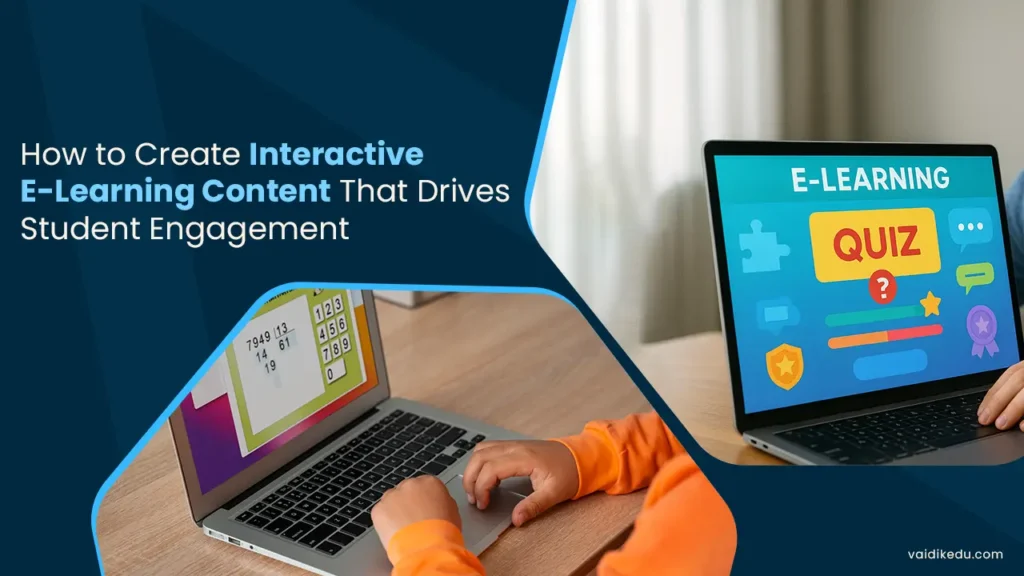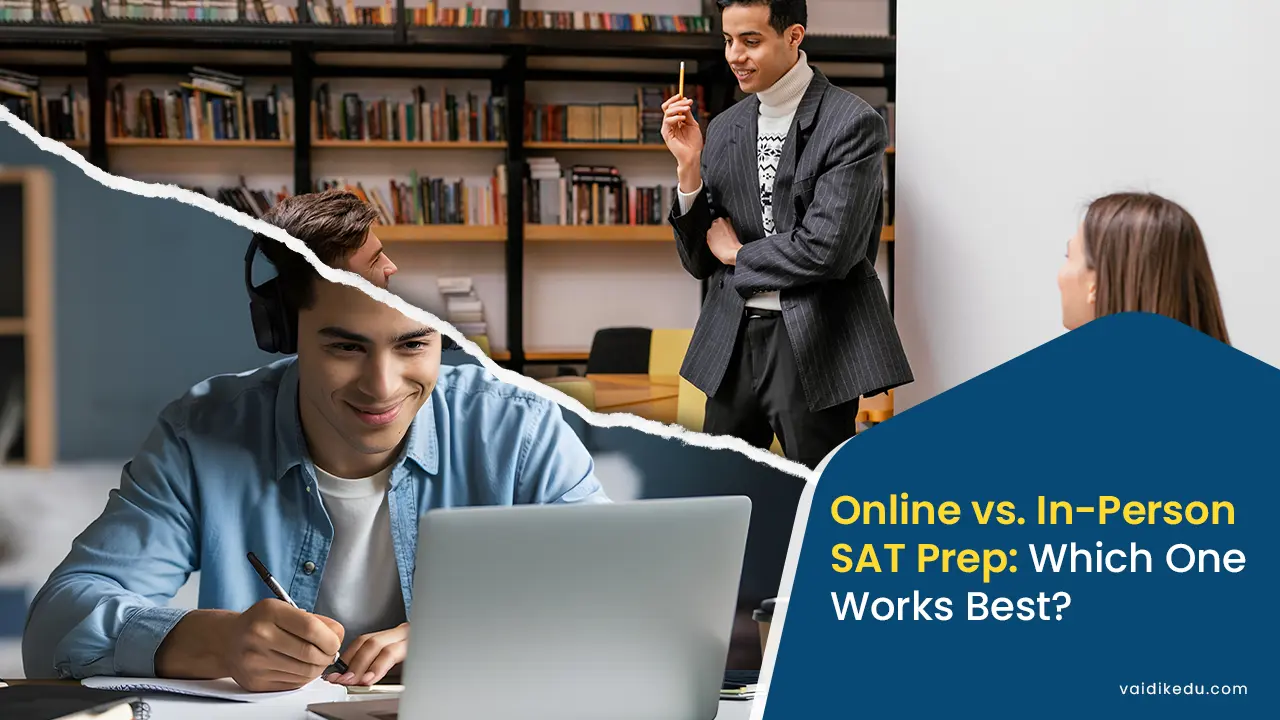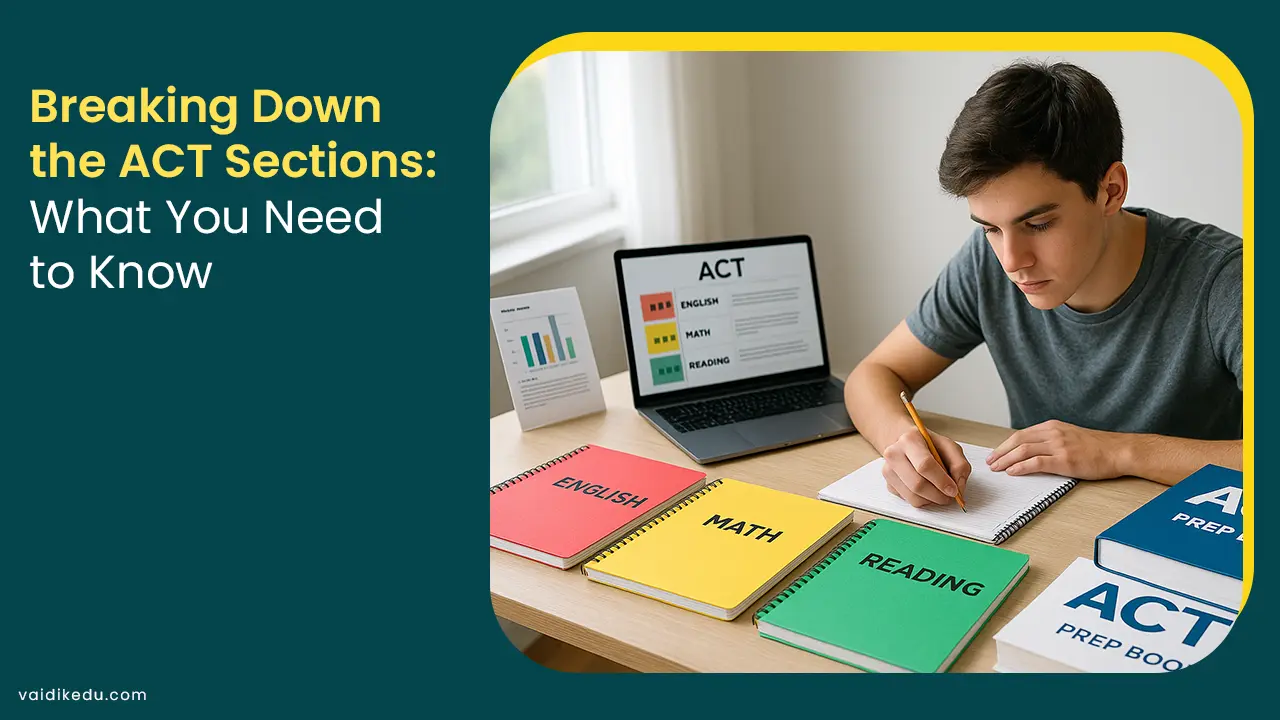E-learning is the need of this digital world today because it offers flexibility and accessibility that no traditional classroom can provide. Recently, it has been seen that the demand for engaged e-learning content has increased rapidly. This is because of the search for personalized and interactive experiences among students that will make learning effective and fun.
Interactive e-content engages learners so that they remain engaged, also learn the stuff much better and retain it quite well. Now, in the following blog we shall look for the need to have e-learning, what this term ‘Student Engagement’ pertains to and how you should design interactive content to elicit participation and help in achieving results.
Why Do We Need E-Learning
E-learning has completely transformed the face of education, especially with technology. Today, learners have the world at their fingertips. This has made learning accessible to learners at their own pace and at any location in the world, especially for adult learners, working professionals, and those in remote areas. But still, convenience is not the only thing e-learning has to offer.
It presents a wide range of multimedia tools for videos, infographics, and interactive elements that can be used to create engaging, dynamic content, thus enhancing learning experiences with its aspects of better accessibility of information, memorability, and relatability.
The push of learners away from traditional classroom methods brings with it the expectation of content that keeps them involved rather than passive listening and reading.
What is The Meaning of Student Engagement in Learning
Student engagement refers to the interest, enthusiasm, and commitment level with which students take their educational experience. It has many facets in learning, such as attention, motivation, interaction with the material, and the degree to which learners actively participate in their education. Students who are engaged tend to learn better, remember better, and use what they learned.
Engagement in e-learning involves more than just watching content or doing assignments.It is interacting with the content in ways that deepen understanding and encourage critical thinking.
An engaged learner participates in discussions, reflects on their learning, asks questions, and applies concepts to real-world scenarios. Therefore, improving educational outcomes calls for creating interactive e-learning content that encourages such active engagement.
Is Interactive E-Learning Content important
Interactive e-content is meant for active engagement and participation of students in their study process rather than passive reception of material. This would include different interactive learning activities meant to engage, think, or apply the outcome of the learning experience.
Some examples might be quizzes and drag-and-drop functions, simulations of real-world experiments, discussion forums, and applying what they learned to real scenarios.
Interactive content is a very important component because it’s more fun to learn with. It also makes the retention and understanding of the concepts better.
Many studies have proved that learners retain better when using interactive content rather than reading or watching passive content. This is because interaction lets learners practice what they know, leading to a much deeper understanding of the concept.
Key Strategies For Designing Interactive E-Learning Content
Below are the steps you should consider when designing your interactive content:
1. Know Your Audience
Understand who your learners are before making content. Are they young students, working professionals, or adult learners seeking new skills? What are their learning preferences?
The understanding of the target audience is important to make design and delivery methods accordingly. For instance, younger learners will require visually rich content, whereas adult learners will look for practical applications in real life.
2. Incorporate Multimedia Elements
E-learning is very effective when utilizing various media, for example, text, images, audio, and video. Multimedia appeals to different learning styles and makes for a more exciting experience.
Videos can be applied in the interpretation of complex information, whereas pictures or infographics may simplify a lot of information in a document. Interactive visual learning may add to learners the instant feedback that is sometimes not available to them through more static learning formats.
3. Create Interactive Quizzes And Assessments
Quizzes are fantastic tools to determine learning, but to make this interactive, vary the type of questions that one can ask with multiple-choice and true or false, fill in the blanks, and matching questions, and give them instant feedback to guide the learner and show the learner why he or she has answered something that is right or wrong.
And gamify this assessment by leveling, points, or rewards which will challenge students to participate in a more active approach and attain much better results.
4. Incorporate Real-World Scenarios And Case Studies
Real-world scenarios and case studies are a strong way to make learning relevant and practical. The ability to put learners in real-life situations mirroring challenges they might face in their profession or daily life gives them the opportunity to apply theoretical knowledge in a practical environment.
Scenario-based learning allows the learner to be critical, decide, and see the consequences of their actions. Simulations are also a great tool for this, whether it’s a virtual business environment, medical training, or engineering problems.
5. Use Storytelling Techniques
There are times when simple storytelling can involve learners very nicely. Lessons wrapped in a nice story can provide an emotional appeal to learners’ content.
As an example, you may frame a story and have the role of the protagonist, solving different problems or decisions, but providing knowledge for its success in a course content storyline. Storytelling involves adding a mysterious component that drives a learner to further pursue the content.
6. Encourage Collaboration And Social Learning
E-learning should not be a one-way activity. Instead, you should introduce social learning features, such as threaded discussion forums, peer reviews, and group assignments. Where learners can share ideas, discuss concepts, and learn from one another, they tend to be more engaged.
You may also hold live Q&A sessions, webinars, or collaborative workshops to foster that sense of community. This kind of interaction improves the richness of the learning process and keeps learners motivated.
7. Offer Immediate Feedback And Support
Feedback is one of the most potent tools to keep the learners on the track. Once learners receive immediate feedback on their performance, they can immediately spot what they should work on better.
Be it after finishing a quiz, a task, or even after having a discussion, feedback helps keep the learner on track and inspires him or her to continue. If learners are allowed easy access to extra resources or support, then they are able to feel capable and confident to succeed.
8. Make Learning Modular And Scalable
Breaking your e-learning content into smaller, digestible modules can help learners not get overwhelmed. A module should contain one key concept so that learners can take manageable chunks of information. You can also use progress bars, checklists, or certificates to reward learners for completing modules. This will keep them motivated throughout the course.
9. Compatibility with Mobiles
The more learners interact with e-learning on their smartphones and tablets, the more critical it becomes that your content be mobile-friendly. So, design your e-learning courses to be easily navigable and accessible on all devices.
Also, mobile-compatible content allows learners to catch study at any time and place, therefore, they are in a better position to engage and complete courses.
Conclusion
Creating interactive e-content is crucial for student engagement and the effectiveness of experience through online learning. By using multiple multimedia elements, quizzes, real scenarios, and social interaction opportunities, you can design courses that are active and help learners in the long run remember what they have learned.
Interactive e-learning is not about just including flashy features. Rather, it involves creating meaningful experiences that help learners apply their knowledge, solve problems, and finally succeed.
Frequently Asked Questions
The multimedia elements like texts, audio, images, etc, create more creative content resulting in more impactful learning.
The interactive e-learning content refers to the learning material and methods which includes active learning through various methods and technology.
These include quiz questions that show the learner right away whether his answer is correct, drag-and-drop exercises, real-world simulations, group projects, case studies, and interactive discussions meant to get the learner to apply what they learn.
In e-learning, real-life scenarios provide the learners with the experience of applying the knowledge in real life. This enhances their critical thinking and problem-solving skills.









